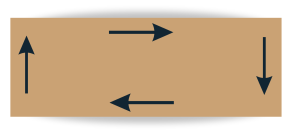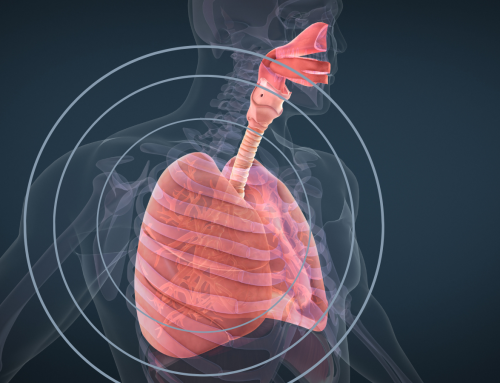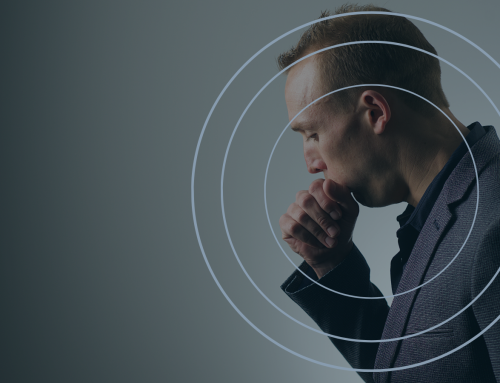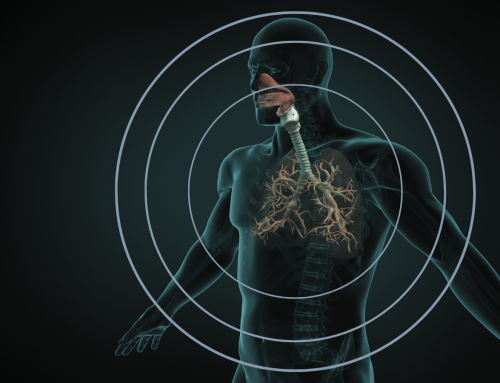Anxiety. Most of the time when we talk about anxiety, we talk about how we feel mentally and emotionally. But anxiety can come with a host of physical symptoms too, and sometimes the connection between how you are feeling physically and your emotional state isn’t always clear. In this blog we’ll break down why our body responds the way it does when we feel anxious and offer some support with breathing exercises for anxiety that may help.
Fight or flight – your body’s reaction
When you’re feeling anxious, the ‘fight-or-flight response’ kicks in. Also called the acute stress response, the fight-or-flight response is a physiological reaction to an event that the body perceives stressful or dangerous. Your body releases a number of hormones to either stay where you are and deal with a threat or to run away to safety – fight or flight. This will cause the following to occur:
- dilated pupils
- increased heart rate
- increased blood pressure
- breathe more rapidly
While this physiological response is a good thing when we are faced with genuine danger, it’s much less beneficial as a response to anxiety, where issues like more rapid breathing over an extended period can become debilitating to live with.
Breathing exercises for anxiety
Pursed lip breathing
Pursed lip breathing is one breathing technique that can help you calm down anxiety by slowing your breathing down. You can perform this technique when you’re sitting down or when you’re moving around.
How to do pursed lip breathing:
- Breathe in gently through your nose for two seconds – make sure you keep your mouth closed while doing so!
- Purse your lips together – put them in a position like you’re going to whistle or sip through a straw
- Breathe out through your mouth – count to four while you do this.
Pursed lip breathing is particularly effective when you are feeling anxious because it helps slow down the pace of your breathing. Breathing too quickly can lead to a vicious cycle of breathlessness and more anxiety.
Rectangle breathing
Using the same steps as above, it can help to visualise breathing your way around a rectangle to help slow your breathing down:
For example
- As you breathe in, follow the line up the short side on the left,
- As your breathe out through pursed lips, follow the line along the longer side at the top,
- Breathe in and follow down the shorter side on the right,
- Then breathe out and follow along the line at the bottom.
- Repeat breathing your way around the rectangle until symptoms ease.

Diaphragmatic breathing
One of the problems many of our patients with anxiety have is that they begin to breathe from the top of their chest rather than using the lower part (using the diaphragm). This results in each breath being more shallow, and consequently patients feel like they need to breathe quicker. In turn, breathing quickly can make us feel more anxious, and a vicious cycle begins.
Diaphragmatic breathing, which some people refer to as belly breathing (although this isn’t strictly correct as our lungs do not sit in our belly; it helps to describe breathing being generated from lower down in the chest and not the top) has a number of benefits, one of which is recognised as reducing the physiological consequences of stress in healthy adults.
How to do diaphragmatic breathing
Before you begin, make yourself comfortable, ideally lying down with your head and shoulders well supported.
- Place one hand on the top part of your chest and the other on your tummy,
- Breathe gently and silently in and out through your nose,
- Try to make your breath out twice a long as your breath in,
- Each breath should be the same size.
- When you breathe in you should feel your lower chest and tummy rise as the diaphragm flattens. The upper part of your chest should not move.
Perform this for 10 minutes every morning and evening to re-set and optimise your breathing pattern.
To see diaphragmatic breathing in action, watch our video:
The BradCliff Breathing 7 Level Switch Off
With credit to the BradCliff Breathing Team
The ‘7 Level Switch Off’ is designed to help you ensure you have optimal alignment in order for your diaphragm to work effectively, calming your breathing and extending relaxation to your whole body.
The goal is to feel internal relaxation so the diaphragm can expand and contract, working as the vital pump that it is. Imagine a rod extending vertically through your body to maintain an upright and aligned posture. It is essential to relax around this imagined rod by breathing gently through your nose and abdomen.
Sitting comfortably, use the directions below to align your body starting at your feet and moving upwards, then breathe gently through your nose and abdomen. Close your eyes if helpful.
- Ankles
Cross your ankles. Relax your legs. - Pelvis
Sit with your bottom against the back of the chair. Sit on your bottom bones. Place one finger over your belly button and pubic bone and widen this space, your back may curve a little, move backwards and forwards until you feel the most weight under your sit bones. - Chest
Open the ‘breathing window’ in your trunk. Place one finger on the top of your breastbone, and one on your belly button. Gently widen this space until you feel your earlobes are in line with your shoulders. - Shoulders
Loosen your shoulders. Lift them and release. Pull backwards and release. - Chin
Tuck in your chin. Gently stretch your neck. Release - Jaw
Relax your jaw. Rest your tongue behind your top teeth. - Breathe
Maintaining good alignment breathe in and out using your nose and abdomen, relax and loosen all over.
Tip: You can also incorporate the other breathing techniques discussed previously in this article, but the key is to maintain your alignment.
If you’d like more support with your breathing technique…
Our respiratory physiotherapists are here to support patients who are struggling with a range of breathing issues. We take time to understand your story and your symptoms, and carefully curate a treatment plan that suits your needs and caters to your goals.
You can book your first appointment online via our booking page or drop an email if you’d like to find out more enquiries@airphysiotherapy.co.uk.





